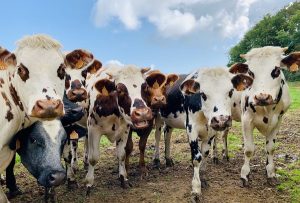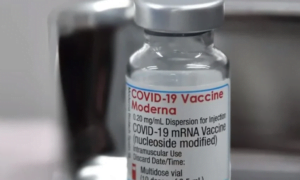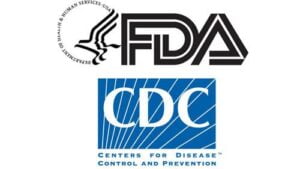When just five corporations dominate the world’s seed, pesticide and biotech industries, they control the fate of food and farming. Between them — Monsanto, DowDupont, BASF, Bayer, and Syngenta — have historically unprecedented power over world agriculture, enabling them to control the agricultural research agenda, heavily influence trade and agricultural agreements and subvert market competition. Along the way, these companies intimidate, impoverish and disempower farmers, and undermine food security, all while making historic profits — even as their genetically engineered seeds fail to deliver as promised. Contrary to what the marketing campaigns say, these corporations are in the game of expanding their marketshare. Period. According to the United Nations Conference on Trade and Development (UNCTAD), corporate concentration of the agricultural input market “has far-reaching implications for global food security, as the privatization and patenting of agricultural innovation (gene traits, transformation technologies and seed germplasm) has been supplanting traditional agricultural understandings of seed, farmers’ rights, and breeders’ rights.”
One of the principal but little known operations of the Rockefeller Foundation has been its techniques for controlling world agriculture. Its director, Kenneth Wernimont, set up Rockefeller controlled agricultural programs throughout Mexico and Latin America. The independent farmer is a great threat to the World Order, because he produces for himself, and because his produce can be converted into capital, which gives him independence.
In Soviet Russia, the Bolsheviks believed they had attained total control over the people; they were dismayed to find their plans threatened by the stubborn independence of the small farmers, the Kulaks. Stalin ordered the OGPU to seize all food and animals of the Kulaks, and to starve them out. The Chicago American, February 25, 1935 carried a front page headline,
To draw attention away from this atrocity, it was later alleged that the Germans, not the Soviets, had killed six million people, the number taken from the Chicago American headline by a Chicago publicist. The Communist Party, the Party of the Peasants and Workers, exterminated the peasants and enslaved the workers. Many totalitarian regimes have found the small farmer to be their biggest stumbling block.
The French Reign of Terror was directed, not against the aristocrats, many of whom were sympathetic to it, but against the small farmers who refused to turn over their grain to the revolutionary tribunals in exchange for the worthless assignats. In the United States, the foundations are presently engaged in the same type of war of extermination against the American farmer.
The traditional formula of land plus labor for the farmer has been altered due to the farmer’s need for purchasing power, to buy industrial goods needed in his farming operations. Because of this need for capital, the farmer is especially vulnerable to the World Order’s manipulation of interest rates, which is bankrupting him. Just as in the Soviet Union, in the early 1930s, when Stalin ordered the Kulaks to give up their small plots of land to live and work on the collective farms, the American small farmer faces the same type of extermination, being forced to give up his small plot of land to become a hired hand for the big agricultural trusts.
The Brookings Institution and other foundations originated the monetary programs implemented by the Federal Reserve System to destroy the American farmer, a replay of the Soviet tragedy in Russia, with one proviso that the farmer will be allowed to survive if he becomes a slave worker of the giant trusts. Once the citizen becomes aware of the true role of the foundations, he can understand the high interest rates, high taxes, the destruction of the family, the degradation of the churches into forums for revolution, the subversion of the universities into CIA cesspools of drug addiction, and the halls of government into sewers of international espionage and intrigue.
Speeding up the treadmill
Superweeds now plague more than 60 million acres of U.S. farmland, thanks to widespread planting of Monsanto’s “RoundUp Ready” crops. When RoundUp Ready seeds were originally released, Monsanto assured farmers and the public alike that weed resistance to glyphosate — RoundUp’s active ingredient — would be a non-issue. They were wrong. And now, Dow and Monsanto are making the same case in support of the “new generation” of 2,4-D/dicamba-resistant GE seeds, but the facts are in. We cannot outwit evolution.
Designed to “fix” the problem of glyphosate-resistant superweeds, new GE crops — some still in the USDA pipeline awaiting agency approval — have been engineered for use with antiquated, hazardous pesticides like 2,4-D and dicamba. But what’s going to stop weeds from developing resistance to these herbicides, too? Nothing, according to weed scientists, who predict a new epidemic of herbicide-resistant superweeds.
Meanwhile, Dow’s 2,4-D-resistant corn, approved in late 2014, is expected to drive a 20-fold increase in the use of 2,4-D over the next six years — from an estimated 5.2 million pounds in 2014 to over 100 million pounds by 2020. This 2,4-D corn, part of Dow’s “Enlist Duo” seed line, is designed to withstand a patented combination of 2,4-D and glyphosate — ensuring continued widespread use of that herbicide, too. So industry’s response to the widespread harms of RoundUp Ready crops? More of the same.
High stakes
The pesticide treadmill wreaks havoc on farmer livelihoods in several ways, from the expense of patented GE seed (and the accompanying chemicals) to the cost of managing superweeds in the fields to the constant risk of seed patent lawsuits. Many herbicides also drift from where they’re applied to harm neighboring, non-GE crops. Broadleaf plants like tomatoes and grapes, in particular, are susceptible to damage from 2,4-D.
These drift-prone chemicals are often linked to health harms. The World Health Organization recently completed an assessment of independent studies and determined that glyphosate is a “probable human carcinogen.” And 2,4-D — the herbicide mixed with glyphosate in Dow’s recently approved “Enlist Duo” formulation — is a suspected endocrine disruptor that has been linked to cancer and reproductive harm. Children are particularly susceptible to its effects. Use of these chemicals, driven up by GE crops, puts farmers, farmworkers and rural communities in harm’s way.
In a 2015 poll, 90 percent of Iowa farmers reported feeling that “pest management is a never-ending technology treadmill.” And they are not pleased.
Recognizing the potential harm to their own crops and farmland across the country, conventional and organic farmers alike are speaking out loud and clear against Dow’s 2,4-D-resistant corn and soy. And many are nervous about potential drift damage from dicamba, when those crops come to market.
In the words of Iowa farmer Denise O’Brien:
The whole suite of new GE seeds is a bad idea for farmers and farm communities. The pesticide industry is introducing one troubling GE seed after another.”
With rules governing GE crops up for review, we have a collective opportunity to help farmers off the pesticide treadmill. Even if Monsanto doesn’t like it.
Corporate Science & Spin
“Unfortunately, it is impossible to verify that genetically modified crops perform as advertised. That is because agritech companies have given themselves veto power over the work of independent researchers.” — Editors, Scientific American
Since the mass introduction of pesticides into food and agriculture following WWII, control over the knowledge needed to grow food has been shifting from farmers to the laboratories financed by multinational corporations. As a result, scientific research that serves corporate interests, rather than the public good, has become the norm. The importance of science for the public good is difficult to overstate — especially when it comes to feeding our world.
Instead of asking, “How can we efficiently grow the most nutritious tomato in a sustainable way?” corporations ask, “How can we genetically modify a crop that tolerates large doses of our flagship pesticide product?” And then, the big biotech and pesticide corporations — Monsanto, DowDuPont, Bayer, BASF and Syngenta — conduct focused, well-financed research, lobby decisionmakers and launch PR efforts to ensure that these products come to market — regardless of their efficacy or safety.
In reviewing the health and environmental impacts of pesticide products, EPA relies almost entirely on industry-funded studies. Chemical companies commonly sit on panels and committees that “advise” regulators as well. A representative from DowDuPont, for instance, served on the Endocrine Disruptor Screening and Testing Advisory Committee for EPA. And, much too often, there is a “revolving door” of former agrichemical industry executives, lawyers and scientists serving in government agencies tasked with industry oversight.
Even though corporate studies — and corporate representatives — are often driving regulatory decisions, this research is rarely available for public or peer review. Instead, it is kept out of sight under the auspices of “Confidential Business Information” or patent protection.
When scientists do unearth harmful impacts of pesticide products, biotech and pesticide corporations will go to great lengths to suppress their findings. Just ask Dr. Tyrone Hayes of UC Berkeley, for instance. When his research on atrazine highlighted the endocrine-disrupting properties of Syngenta’s flagship herbicide, the corporation launched a campaign to discredit him, including commissioning a psychological report, planting company reps at speaking engagements, and even targeting his wife for investigation.
Not surprisingly, the agricultural industry maintains an army of lobbyists in D.C., state capitals and countries worldwide to protect their interests. As a special interest lobbying bloc, agribusiness spends over $90 million a year lobbying Congress. They wield influence in an array of areas, from anti-trust, patent and tort law to labeling, food safety, insurance and financial services regulation.
The American Farm Bureau Federation, one of the most powerful interest groups in Washington, D.C., claims to be the “voice of farmers.” In fact, they lobby for corporate agribusiness and speak on behalf of a membership base comprised not of farmers, but of insurance industry affiliates. In 2014, the agricultural input industry alone spent $30 million on lobbying. Monsanto and Biotechnology Industry Organization spent over $12 million combined.
Public concern about and opposition to pesticides and GE crops has grown tremendously in recent years — and the agrichemical corporations have taken note. Monsanto & Co. have doubled down on their PR campaigns in an attempt to control the public narrative around food and farming. According to analysis from the Center for Public Integrity, agricultural industry trade groups are now “putting far more money into advertising and public relations than lobbying.”
As reported by our partners at Friends of the Earth in Spinning Food, 14 of the most significant food and agriculture front groups spent roughly $126 million from 2009 to 2013 on a “range of tactics designed to shape what the public and policymakers think about food, health and sustainability.” At PAN, we’re working with farmers, scientists and communities on the frontlines to shine a light on the corporate spin machine — and expose the undue influence of the pesticide industry on regulatory decisions. A handful of corporations have held food and farming captive for far too long. Join us in working for a food system that prioritizes healthy communities, local economies and sustainable farming practices over corporate profiteering.
Monsanto & Co’s Dirty Little Secret

Herbicide-resistant GE seeds have driven dramatic increases in pesticide applications since they hit the market in the 1990s — and that’s no accident. According to industry data, most of the genetically engineered (GE) crops planted worldwide are designed for use with chemical herbicides, contain insecticides — or both.
Around the world, GE crops consistently have failed to live up to the promise — as touted by industry — of higher yields and reduced reliance on pesticides. Instead, these patented GE seed and pesticide packages have dramatically driven up the use of harmful chemical inputs — placing the burden of increased costs and health risks on farmers and local communities. The “dirty little secret” of the pesticide/biotech industry? GE seeds increase pesticide use by design, intentionally boosting market share for corporations like Monsanto, DowDuPont.
GE seeds sell pesticides
The strategy of stacking seeds with herbicide-resistant traits is deeply flawed. As “superweeds” and “superbugs” evolve resistance to GE crops and their associated pesticides, farmers resort to more chemical use, not less. Not surprisingly, the same big biotech corporations that develop GE crops also manufacture pesticides engineered to accompany their seed products, which are the growth engines of the pesticide industry’s sales and marketing strategy. For the bottom line of these corporations, GE technologies are paying off.
For farmers, consumers and the food system? Not so much.
Analysis of USDA data out of Washington State University shows that adoption of GE crops in the U.S. resulted in a 527 million pound increase in herbicide use between 1996 and 2011. In 2011 alone, GE crops used 20 percent more pesticides on average than non-GE crops. For the past 20 years, the primary herbicide used with GE crops was Monsanto’s flagship product RoundUp, with the active ingredient glyphosate. Now that weeds have developed resistance to glyphosate and human health concerns are emerging, this strategy has clearly run its course.
Monsanto and DowDuPont have now joined forces to bring a second generation of GE seeds to market — including 2,4-D-resistant corn and soy approved in 2014 — with the clear intention of duplicating the failed RoundUp Ready model.
Follow the money
As GE technology fails to live up to its promises worldwide, Monsanto, DowDuPont, Syngenta, BASF and Bayer — big biotech and pesticide corporations — continue to reach for profit. With widespread sales of GE seeds and their accompanying pesticides dominating the market, profits for agrichemical corporations continue to rise. Monsanto’s net income, for example, doubled from $993 million in 2007 to $2 billion in 2008.
Reliance on GE herbicide-resistance has taken over the U.S. seed market in a relatively short period of time. Since their introduction in 1996, glyphosate-resistant soy climbed to 54% of U.S. acreage by 2000 — and accounted for 92% of U.S. soy acreage by 2008. And not only are GE seeds more expensive than their non-engineered conventional counterparts, most are used with specific herbicides that cannot be substituted with cheaper varieties. The price of RoundUp Ready soy seeds tripled from $6.50/bag in 2000 to $17.50/bag in 2009.
We see it happening around the globe. Farmers in the U.S., India, China, South Africa and beyond are increasingly trapped on a pesticide treadmill — with farming communities exposed to health-harming herbicides. To Monsanto & Co., these growing pesticide sales are part of the business plan. But there’s too much at stake for farmers and rural communities to let corporate business plans control the food system. It’s time to make a broadscale shift away from pesticide and GE reliance, and toward agroecological farming that supports resilience, healthy soil, local economies and food aplenty.
Pesticides threaten salmon & whales, too
A new, national report shows that organophosphate pesticides (OPs) threaten the health of aquatic wildlife, notably orca and salmon. Researchers at the National Marine Fisheries Service (NMFS) evaluated malathion, diazinon and the controversial pesticide chlorpyrifos. Chlorpyrifos was slated for a national ban at the Environmental Protection Agency (EPA) last spring, due to known health harms to children and farmworkers. Administrator Scott Pruitt reversed course on the decision after a meeting with Dow Chemical, leaving the dangerous insecticide on the market.
The NMFS study found that dozens of threatened or endangered species — and their critical habitats — were in jeopardy. The report focused on species listed under the Endangered Species Act that the Environmental Protection Agency had previously flagged as potentially at risk from pesticide exposure. Both chlorpyrifos and malathion were found to be especially damaging. The study found both chemicals “likely to jeopardize the continued existence of 38 of the 77 listed species” and negatively impacting “37 of the 50 designated critical habitats” where those species live. Salmon species and killer whales, or orcas, were found to be threatened by all three OPs.
Salmon are threatened by a number of environmental factors, such as climate change, habitat loss and pesticide runoff. The fish are also culturally significant to Pacific Northwest tribes and represent a significant piece of the ecosystem — and of the Northwest fishing industry.
Orcas are at risk because they depend on salmon as a food source. And the wild salmon population in the Pacific Northwest is currently estimated at five or six percent of historic levels, according to the Executive Director of the Save Our Wild Salmon Coalition.
The NMFS was asked to issue this report under a court ordered deadline from a lawsuit brought by Earthjustice, the Northwest Center for Alternatives to Pesticides, Pacific Coast Federation of Fishermen’s Associations and the Institute for Fisheries Resources.
Killing two birds with one seed
The U.S. Environmental Protection Agency (EPA) released several scientific assessments that found commonly used neonicotinoid pesticides (neonics) can kill and harm birds of all sizes. This comes on the heels of new research from the University of Saskatchewan, with experimental evidence finding dramatic effects of neonics on birds inhabiting farmland or open countryside — causing migrating songbirds to lose their sense of direction and suffer drastic weight loss.
While honey bees are the most commonly discussed pollinator endangered by pesticide exposure, this research is a reminder of the wide range of pollinators — including about 4,000 types of bees, butterflies, bats and birds — that can be impacted by agricultural chemicals.
Independent scientists largely concur that bee declines are caused by a combination of several factors, including increased overall pathogen loads, poor nutrition, habitat loss and pesticide exposure. And neonicotinoid pesticides — both alone and in combination with other pesticides — have emerged as a key factor in bee die-offs, both because of their direct toxicity to bees and their indirect and cascading effects.
As we’ve seen from recent (and previous) research on birds and neonics, some of the same factors stressing bee populations are similarly damaging to avian pollinators.
Birds eat seeds . . . and whatever’s on them
EPA’s recent assessments found that risks posted to certain birds from eating neonic-treated seeds exceeded the agency’s level of concern by as much as 200-fold. If neonic-treated seeds make up just one to six percent of a bird’s diet, serious harms could result.
This is a problem because millions of neonic-treated seeds are planted annually in the U.S., including almost all of the corn, and around 40% of the soy. Compounding that, EPA doesn’t require coated seeds to be registered as a “pesticide application,” and has no program to adequately assess the ongoing environmental impacts of neonics building up in soil and water.
In fact, just a few days before EPA shared findings related to neonics and birds, the agency also reversed an Obama-era determination that seeds treated with neonicotinoid insecticides bring little benefit for soybean growers. This finding flies in the face of a body of independent research, and the agency’s previous assessment, that soy yields do not increase from neonic seed coatings.
Our work to protect pollinators — birds, bees, bats and beyond — continues. And one clear way to do that is to push for policies and practices that curb agricultural reliance on neonics and other pollinator-harming pesticides.
In January 2016, Center for Food Safety filed a lawsuit challenging EPA’s inadequate regulation of neonic seed coatings on behalf of PAN, several beekeepers, farmers and other sustainable agriculture and conservation groups. And PAN is continuing to push for protective pollinator policies in Minnesota, where the state Governor and Department of Agriculture have taken action steps to protect state pollinators.
The mass production of America’s food comes with a hefty price. Find out the environmental, animal, and human impact of raising over 99 percent of US farm animals in factory farms in this infographic, “The Truth About Factory Farms.”
In this infographic, Dr. Mercola has provided a picture of what happens to chickens, pigs, and cattle in factory farms under factory-farm conditions. For starters, hundreds of millions of male chicks are killed each year upon hatching because they will not grow up to lay eggs! Disease is rampant among these CAFO animals: they live in cramped and unsanitary living conditions, a natural consequence of raising animals in unbelievable numbers. It is just as highly disturbing how CAFO animals are routinely administered a variety of drugs, including antibiotics. They’re given drugs whether they’re sick or well, because it’s important to keep as many of them as possible alive until it’s time for slaughter. And what is the result of routinely giving antibiotic to the animals? Significant growth boosts, a purely a financial motive – larger fatter animals equal higher profits.
Raising tens of thousands of animals in one facility translates to a load of waste. Animal manure is traditionally regarded as an important fertilizer when produced on a much smaller scale, but it has become one of the most polluting substances in the country. When this waste is produced in massive quantities, it becomes hazardous. But another irony lies here: federal legislature forbids animal waste from being defined as “hazardous.” According to a report of the Pew Commission on Industrial Farm Animal Production (IFAP), the annual production of manure produced by CAFOs exceeds that produced by humans by at least three times. Animal waste in such volumes may go beyond the capacity of the land to absorb the nutrients and attenuate pathogens.
Factory farm runoff also carries the following:
- Hormones and antibiotics such as Tylosin, a widely used antibiotic for disease treatment and growth promotion in swine, beef cattle, and poultry production. Tylosin decays rapidly in the environment but can still be found in surface waters of agricultural watersheds
- Heavy metals, especially zinc and copper, added as micronutrients to the animal diet
- Pesticides, which are used to control insect infestations and fungal growth
Typically stored in massive “lagoons,” the waste often converts to rivers of waste that flow from CAFOs to the surrounding environment. This infographic will show you specific cases of environmental pollution and damage brought about by waste from factory farms.
CAFOs serve as breeding grounds for disease not just among animals, but also the farm workers and the rest of us. Feeding livestock continuous, low-dose antibiotics creates an environment conducive to widespread disease proliferation. Antibiotic-resistant disease is particularly concerning. Among the many resistant pathogens today is Methicillin-resistant Staphylococcus aureus or MRSA, which has so far been responsible for more than 94,000 infections and 18,000 deaths in the US each year. A lesser-known issue is the antibiotic-laden manure from CAFOs contaminating the rest of your food supply. This means that even your lettuce may contain antibiotics.
It is likely that these grim realities of the food supply will continue for a long time, as the US Food and Drug Administration (FDA) refuses to impose stricter regulations on CAFOs. What the FDA simply does is ask food producers to voluntarily limit their use of certain antibiotics. Don’t let yourself, the animals, and the environment bear the brunt. The best possible way to avoid CAFO products is to support small family farms in your area, specifically organic farms that respect the laws of nature and create synergistic, self-supporting, non-polluting, non-GMO ecosystems. This infographic will also let you in on organizations you can go to if you want to know more about this cause.
It’s time for you to decide on what type of food system you’re willing to support. After all, knowing the source of your food is a critical aspect of taking control of your health.
Source: http://www.panna.org/key-issues/gmos-pesticides-profit
In this interview below with The New American‘s Alex Newman, U.S. Cattlemen’s Association chief Dr. Brooke Miller explains that American trade and agricultural policies are rigged against domestic producers in favor of foreign multi-national corporate giants. For instance, the government allows foreign cattle producers to deceive American consumers by falsely labeling their beef as being American sourced. Miller discussed the fact that these risks to U.S. food security are a national security issue, something that has been brought to light by the coronavirus crisis. He also explains how globalist organizations and agreements such as the World Trade Organization (WTO) and the U.S.-Mexico-Canada Trade Agreement (USMCA) are harming U.S. sovereignty and economic productivity. This is not a free market, Dr. Miller warned. Finally, the PRIME Act introduced by Representative Thomas Massie, who recently spoke to TNA about it, was discussed.
Chronological History of Events Related to Big Ag

Sackett v EPA: Supreme Court Rules Against EPA in Major Wetlands Case

Canadian Doctor Who Helped Pioneered Puberty Blocker Drugs: “We Were Wrong” – Evidence Shows “Puberty Blockers are Neither Safe Nor Reversible”

US Forest Service Begins Shooting “Unauthorized” Cattle From Helicopters In New Mexico

Whistleblower: The Pentagon Mandated COVID Vaccines, But Then Ignored Concerns About Adverse

Biden Signs Executive Order Designed to Release Transhumanist Hell on America

US Declares Monkeypox Public Health Emergency

Polish and Italian Farmers RISE UP Against Government Elites Destroying Their Family Businesses

Study Finds Young Moderna Jab Recipients Have a 44X HIGHER Risk of Developing Myocarditis Than the Unvaccinated

Pfizer Document Dump Shows Doctor With Ties to Gates Foundation Deleted Trial Participant’s Vaccine Injury






